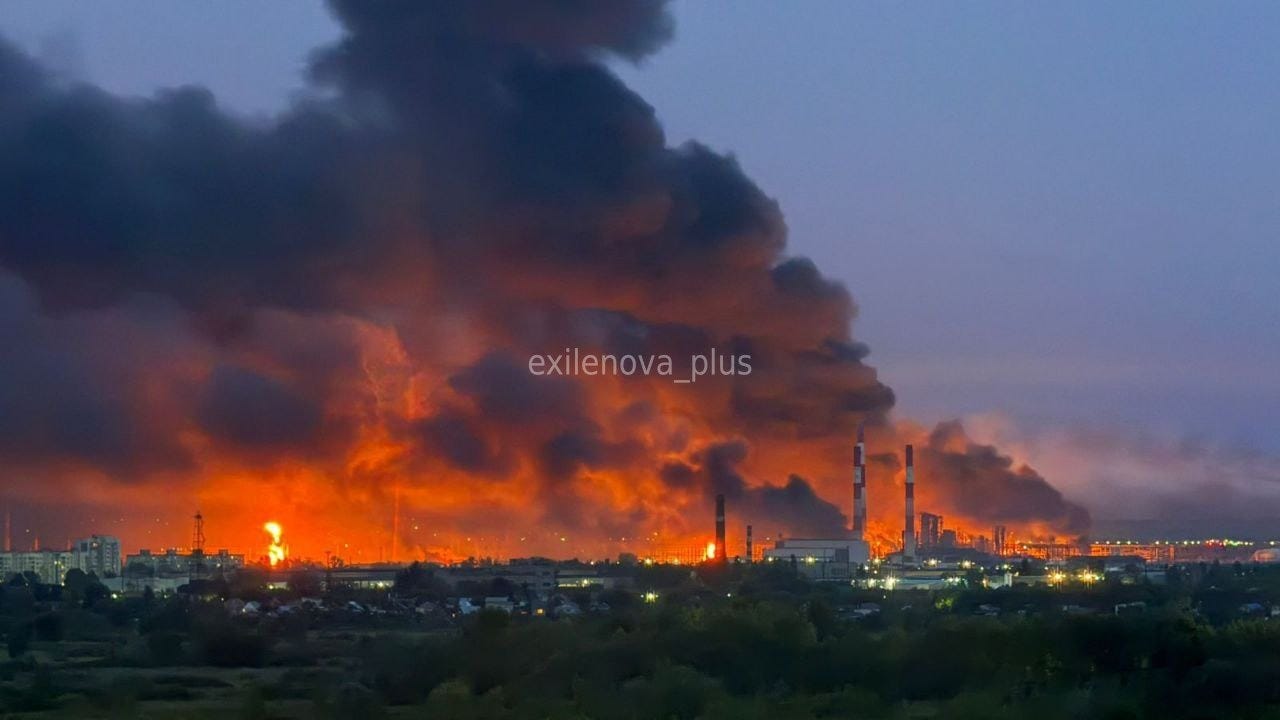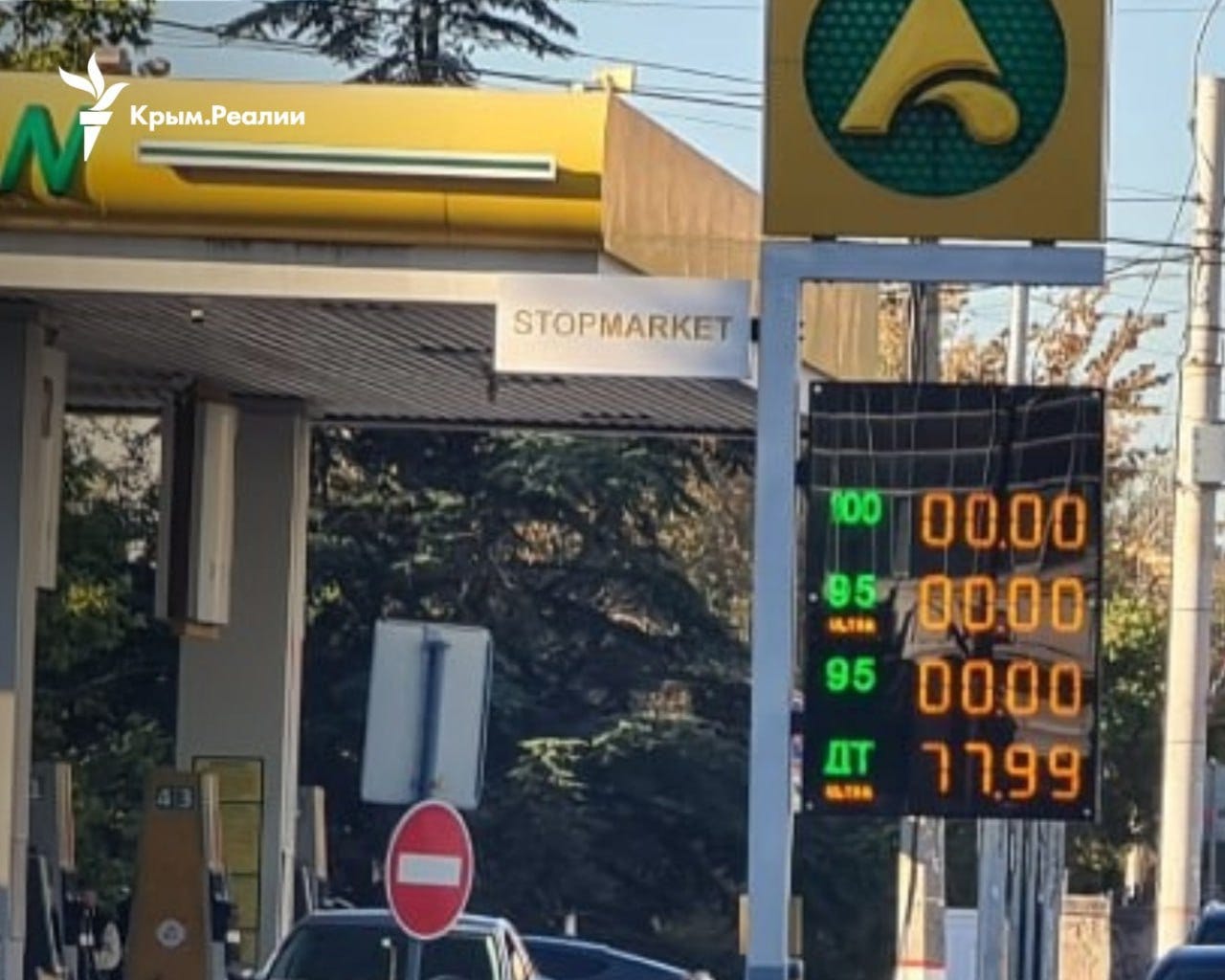Russia's Economic Resilience is Cracking Under Prolonged Stress
Economist Artem Gergun joins OPFOR Journal to discuss deteriorating economic conditions in Russia and what they mean for the war in Ukraine
For three and a half years, the Russian economy has demonstrated remarkable resilience in the face of punishing Western sanctions and escalating Ukrainian attacks on key industries. Now, prolonged stress appears to be taking its toll. In recent months, Russian officials and business leaders have begun publicly voicing concerns about the state of the economy. In private, Russian policymakers are increasingly discussing the need for government bailouts of key industries and financial institutions.
This week, economist Artem Gergun joins OPFOR Journal to discuss how Russia’s economy got to this point, where current trends are heading, and what it means for the war in Ukraine.
Artem Gergun holds a PhD in Political Economy from the National Academy of Sciences of Ukraine and has over 15 years’ experience in political consulting in Ukraine, as well as five years in financial consulting in Singapore. He has worked as a researcher at leading think tanks in Europe, Singapore and the United States. His research interests include modernization theory, the monetary systems of ASEAN countries and China, the post-war reconstruction of Ukraine, and military economics in Russia.
ON THE CURRENT STATE OF THE RUSSIAN ECONOMY:
Dan White:
Hi Artem! Thanks for joining us. Let’s start with the current condition of the Russian economy.
After years of resilience, the Russian economy appears to be genuinely deteriorating. What changed? What are the core problems the Russian economy is facing now?
Artem Gergun:
The resilience of the Russian economy has been largely driven by fiscal stimulus. This approach works only as long as liquidity can be absorbed through productive investment, which requires sustained economic growth. In the first years of the war, Russia managed this by ramping up military production. But now, with the defense industry operating at full capacity, additional fiscal stimulus risks fueling inflation rather than generating growth.
Russia urgently needs new channels to absorb the liquidity created by military spending. Housing and construction could, in principle, play that role, but these sectors were heavily stimulated between 2014 and 2022, creating a bubble that now requires deflation, not further expansion. Another option would have been to channel investment into import substitution and technological development, but those efforts have largely failed.
As a result, Russia has been left with no choice but to maintain ultra-tight monetary policy to contain inflation risks from excessive fiscal stimulus. This, however, suppresses domestic demand in the civilian economy. While military and war-related industries have reached their growth limits, civilian industries are already in recession. The outcome is sluggish overall growth: even President Putin admitted last week that a projected 1.1% GDP growth rate for 2025 is “unsatisfactory,” publicly rebuking his ministers for the slowdown. Their grim faces say it all.
Source: APT on YouTube
Dan White:
Russian officials are now openly raising concerns about the economy and arguing in public over the policies of the Central Bank. What issues and industries are they most concerned about?
Artem Gergun:
The Central Bank faces a dilemma. In theory, interest rates could be lowered if the federal budget were more balanced. But that would require either higher revenues or lower expenditures—neither of which is realistic.
Revenues are under severe pressure due to declining oil export prices, Russia’s primary budget source. The problem is compounded by a strong ruble: each barrel of oil now yields fewer foreign exchange earnings, and Western sanctions combined with high domestic interest rates have left the ruble unusually strong. As a result, monthly budget revenues from hydrocarbons nearly halved this summer compared with the first half of the year.
From the Finance Ministry’s perspective, a weaker ruble would help balance the budget by boosting oil revenues in ruble terms. This would require lower interest rates and, consequently, a significant depreciation of the currency. However, the Central Bank resists this option, since a weaker ruble would fuel inflation. Rising prices would erode public trust in the Kremlin’s narrative of resilience and undermine Putin’s justification of the war to ordinary Russians. The most politically viable alternative, therefore, is to raise taxes—indeed, recent reports suggest that VAT may be increased from 20% to 22%.
As for industries, the stress is most severe in the civilian sectors of the economy. Any business not tied to military production is being forced to scale back investment and cope with high borrowing costs. The consumer side of the economy is already in recession.
ON THE EFFECTIVENESS OF SANCTIONS:
Dan White:
What role have sanctions played? How is Russia coping with them? Which sanctions have been the most painful for Russia to cope with?
Artem Gergun:
Historically, sanctions have not ended wars outright. Their impact lies in degrading a country’s war effort by slowing economic activity and constraining military production. In Russia’s case, however, the most painful effect may not be economic in the narrow sense, but political: sanctions have intensified strains within the elite. Many among Russia’s ruling class are dissatisfied with the war in Ukraine, and the longer the conflict drags on, the more acute their discontent becomes. For now, Putin has managed to suppress this dissatisfaction, but it is unlikely to hold indefinitely—each new step of escalation brings fresh costs.
This dynamic is visible in financial markets. The MOEX Russia Index tends to rise when Putin signals a willingness to end the war or cooperate with the U.S. in that direction, but it falls when sanctions tighten following new escalations.1 In this sense, sanctions function as a constraint on time: they shorten Russia’s horizon for sustaining the war.
ON UKRAINE’S TARGETING OF RUSSIAN OIL AND GAS INFRASTRUCTURE:
Dan White:
Ukraine has significantly increased its long-range strike campaign and has successfully targeted many Russian oil and gas facilities, and centers of industry. What impact have these strikes had on Russia’s economy?

Artem Gergun:
Ukraine’s strikes on Russian oil and gas infrastructure have sharply driven up domestic fuel prices, which are now rising faster than the official inflation rate. This suggests that inflationary pressures will continue to mount despite the Central Bank’s ultra-tight monetary policy. Since fuel costs feed into nearly every stage of production and transportation, higher energy prices ripple through the entire economy, raising costs across the board.
At the same time, the loss of refining capacity is forcing Russia to export more crude oil rather than higher-value refined products. This dynamic depresses the price of Russian crude abroad while driving gasoline and diesel prices higher at home—an especially sensitive issue for households and businesses alike.
Dan White:
As a follow up question, is there a foreseeable tipping point where enough Ukrainian strikes trigger a system collapse in the Russian oil and gas industry?
Artem Gergun:
A complete “system collapse” is unlikely in the near term. Russia’s oil and gas sector is vast, geographically dispersed, and has considerable redundancy built into its infrastructure. Even with sustained Ukrainian strikes, the industry is large enough to keep operating at a reduced but still significant level.
That said, repeated successful strikes on refineries and storage facilities have already exposed key vulnerabilities. If Ukraine can continue to degrade refining capacity, Russia will increasingly be forced to export crude rather than refined products. As I previously mentioned, this shift creates two pressures: pressure on the state budget from declining revenues and pressure on the Russian public as rising fuel prices at home feed inflation.

ON FURTHER PRESSURING RUSSIA:
Dan White:
What further economic pressure can the West apply on Russia?
Artem Gergun:
I think Donald Trump is right in demanding that Europe stop buying Russian oil. One of the most effective remaining levers is to close loopholes in oil sanctions.
Formally, the European Union no longer buys Russian crude, aside from limited natural gas imports. In practice, however, much of Russia’s oil still reaches Europe indirectly. Large volumes are shipped to India, refined into commercial products, and then re-exported to the EU under the label of Indian rather than Russian origin. This “backdoor” trade has allowed Russia to survive under the sanctions.
If Europe were to restrict these indirect imports and instead source more refined products from the United States and the Middle East, it could force Russia to sell oil at even deeper discounts. Revenues would fall to the point where Putin’s allies in the oil business might come to him and say, quite literally, “enough is enough.”
Dan White:
That is all the questions I have for now. Thanks Artem!
To read more from Artem on the geoeconomics of Russia and Ukraine check out his most recent article below.
“Mineral spoils in Ukraine: A poor foundation for peace and recovery”, Stockholm International Peace Research Institute (SIPRI), May 12, 2025.
The Moscow Exchange (MOEX) Russia Index is a capitalization weighted index tracking the biggest publicly traded companies in Russia. It serves a proxy for investor expectations about the future growth of the Russian economy.




